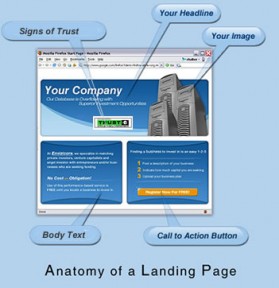Blog: Design Musings and Other Nonsense
We discuss design, business, web products and other miscellany.
What Makes a Landing Page Work
These days I seem to be designing a lot of landing pages. Sometimes they are for a product, sometimes they are for a service. Invariably, though, the design challenges are almost always the same. As such, I wanted to give a little background into how I deal with these issues.
To me, a landing page is about two things. Presenting a compelling offer and (quickly) proving the value of the offer. This is rarely simple, and it almost takes on a design science in and of itself.
The benefit of landing pages is targeting. Most websites are built to cater to a wide variety of users. With landing pages, you can quickly deploy a targeted message to a targeted group. Instead of trying to make your website be all things to everybody, you can use landing pages to to cater your message to a niche audience. People tend to react differently to messages that sound like they are talking directly to them, and landing pages can be a great way to have that conversation.
It is also important to consider what you do with your niche audience’s attention once you have it. That is, OK, so you have your audience’s attention, what are you going to say? This is your big chance to say what you have always wanted to, so don’t squander it. Attention is becoming more and more of a scarce resource everyday, so lead with your best pitch, get to the point, and get out of the way.
Often, the only goal of a landing page is to get people to move on to the next step on your site. Sometimes, they have a specific goal (e.g. purchase offer/product, sign up for mailing list, etc.). Whatever the goal of the page is, be clear about it. Build the page around this goal, being as focused as you can. If possible, build your landing page so you are only asking for one thing. Making multiple offers muddles the process.
Most important, I think, with making an offer on a landing page (or anywhere, for that matter), is to be clear about what is in it for the user. Offers are great, but are you effectively communicating why the offer is such a great thing? Are you making the user an irresistible offer? Are you making it clear what the user will get if they accept your offer (and, conversely, what they might lose if they don’t accept your offer)? In exchange for what you are offering the user, what are you asking for back? Is it (more than) worth it?
All commerce runs on the notion of value. That is, I will exchange this currency for something that has more value to me than having this currency. If you can’t make a compelling case for how the user will be much better off by accepting your offer, perhaps it needs some tweaking.
Lastly, form needs to follow function. Of course great design is important, but the design needs to be in service of the offer. The design is the platter the offer will be served on, and the goal of the design is to be the best showcase for the offer possible.
Photo Credit: Liquidprint

